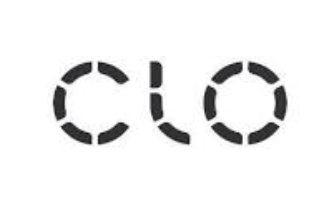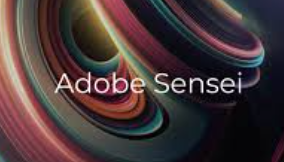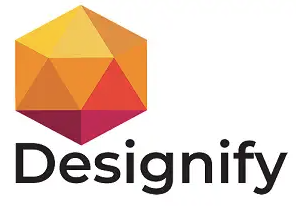Introduction: The Debate Over AI in Fashion Design
Fashion design is an art form that thrives on creativity and innovation. AI tools for fashion design promise to revolutionize the creative process by offering new ways to innovate and streamline design.
But here's the controversial question: Are these AI tools truly elevating creativity, or are they undermining the artistic integrity that defines fashion? In this article, we’ll explore some of the top AI tools for fashion design, their features, and how they’re reshaping the way designers create.
Why Fashion Design Needs AI Tools
Fashion design involves sketching concepts, selecting fabrics, and predicting trends. AI tools are designed to enhance this process by:
Providing design inspiration: AI can analyze trends and suggest unique design elements tailored to individual styles.
Automating pattern creation: Machine learning algorithms can generate complex patterns and optimize fabric usage.
Enhancing trend forecasting: AI tools offer data-driven insights into fashion trends and consumer preferences.
But do these tools really deliver on their promises? Let’s dive into some of the top AI tools for fashion design.
Top AI Tools for Fashion Design
Here’s a breakdown of some of the most innovative AI tools currently transforming fashion design:
1. Clo 3D

Why it’s great: Clo 3D uses AI to create realistic garment simulations, focusing on virtual prototyping and design visualization.
Key features:
AI-driven 3D garment simulation and virtual fitting
Real-time fabric draping and texture mapping
Extensive library of customizable templates and patterns
Pros:
Provides realistic design visualization with AI-enhanced features
Ideal for designers seeking to streamline prototyping
Cons:
Requires a learning curve to master advanced features
Subscription costs may be prohibitive for small studios
2. Adobe Sensei

Why it’s great: Adobe Sensei leverages AI to enhance creative workflows, focusing on design automation and trend analysis.
Key features:
AI-powered design automation and content-aware fill
Trend analysis and pattern recognition tools
Seamless integration with Adobe Creative Cloud
Pros:
Enhances creative workflows with AI-driven insights
Ideal for designers using Adobe’s suite of tools
Cons:
Limited to users within the Adobe ecosystem
Subscription required for full access to features
3. Heuritech

Why it’s great: Heuritech uses AI to predict fashion trends, focusing on data-driven insights and consumer behavior analysis.
Key features:
AI-powered trend forecasting and consumer insights
Real-time analysis of social media and online trends
Customizable reports and visualizations
Pros:
Provides data-driven insights with AI-enhanced analysis
Ideal for brands seeking to stay ahead of trends
Cons:
Subscription costs for access to premium analytics
May require integration with existing marketing strategies
4. Designify

Why it’s great: Designify uses AI to automate design processes, focusing on pattern creation and fabric optimization.
Key features:
AI-driven pattern generation and fabric optimization
Customizable templates and design elements
Integration with digital printing technologies
Pros:
Enhances design efficiency with AI-driven automation
Ideal for designers focused on pattern creation
Cons:
Limited to pattern and fabric design; lacks full design suite
May require additional tools for complete design workflows
5. Stitch Fix

Why it’s great: Stitch Fix integrates AI to personalize fashion recommendations, focusing on consumer preferences and style personalization.
Key features:
AI-driven style recommendations and personalization
Data-driven insights into consumer preferences
Seamless integration with e-commerce platforms
Pros:
Enhances personalization with AI-driven recommendations
Ideal for brands seeking to tailor offerings to consumers
Cons:
Subscription model for access to personalized insights
May require integration with existing e-commerce strategies
The Pros and Cons of AI Tools in Fashion Design
While these tools offer significant advantages, they’re not without their challenges. Let’s break it down:
Pros:
Design inspiration: AI tools offer tailored design suggestions and style recommendations.
Automated creation: Machine learning algorithms simplify pattern generation and fabric optimization.
Enhanced forecasting: AI tools provide data-driven insights into fashion trends and consumer preferences.
Cons:
Learning curve: Many AI tools require specialized knowledge and setup.
Resource-intensive: AI processes can be demanding on software resources.
Risk of losing artistic touch: Over-reliance on AI may compromise the creative process.
FAQs About AI Tools in Fashion Design
Q: Can AI tools replace human designers in creating fashion collections?
A: While AI tools enhance efficiency and provide valuable insights, they lack the creativity and intuition of human designers, making them best suited as complementary tools.
Q: Are these tools suitable for all types of fashion design?
A: Yes, many tools like Clo 3D and Adobe Sensei offer scalable features suitable for various design styles and preferences.
Q: Do AI tools guarantee improved design outcomes?
A: AI tools significantly enhance the chances of improved outcomes through personalized insights and automation, but success also depends on user creativity and engagement.
Conclusion: Are AI Tools the Future of Fashion Design?
AI tools like Clo 3D, Adobe Sensei, Heuritech, Designify, and Stitch Fix are undeniably transforming fashion design. They offer design inspiration, automated creation, and enhanced forecasting, making it easier to innovate your creations.
